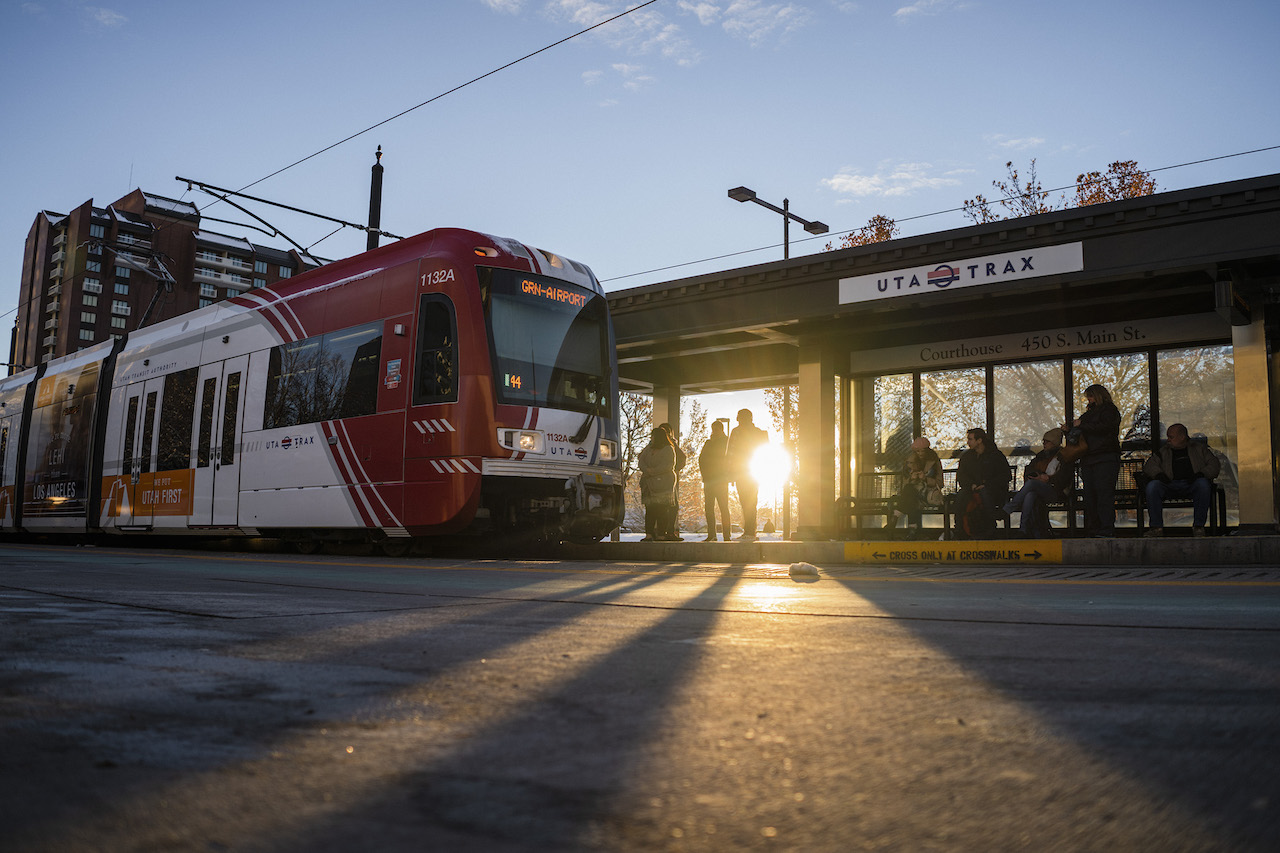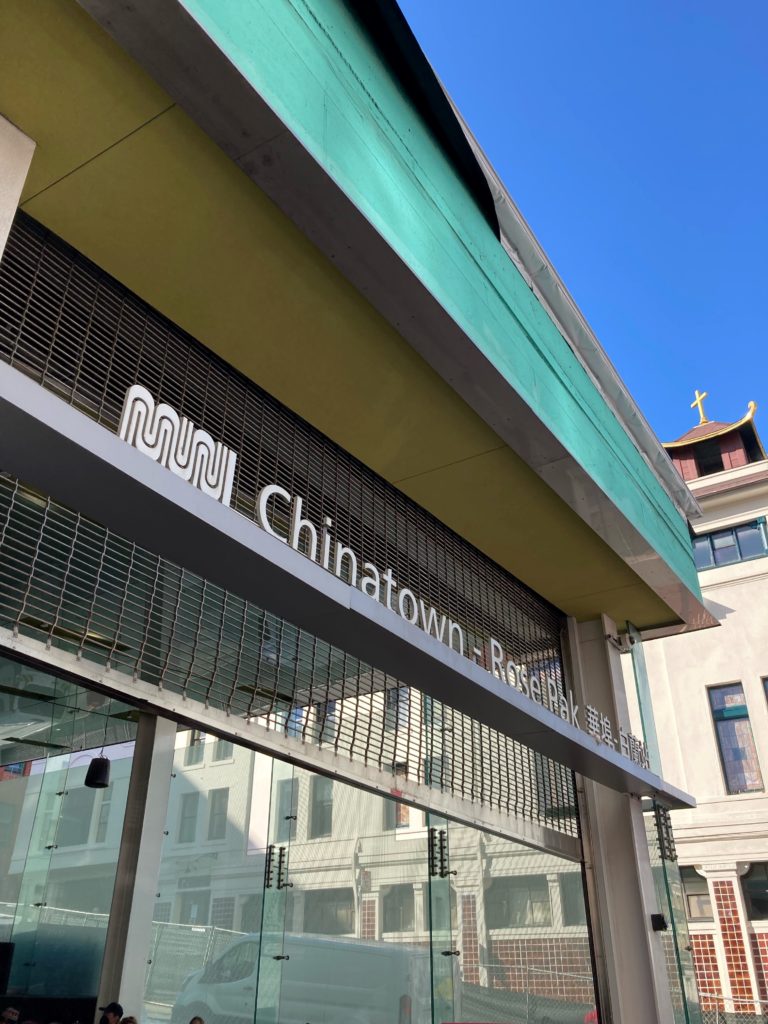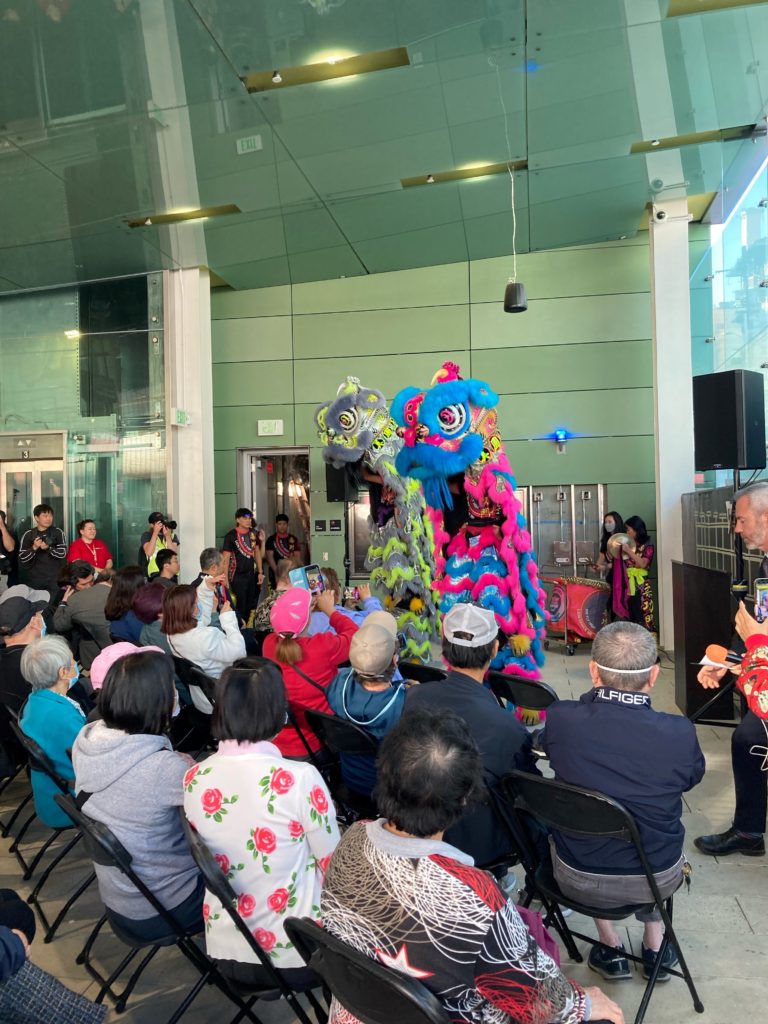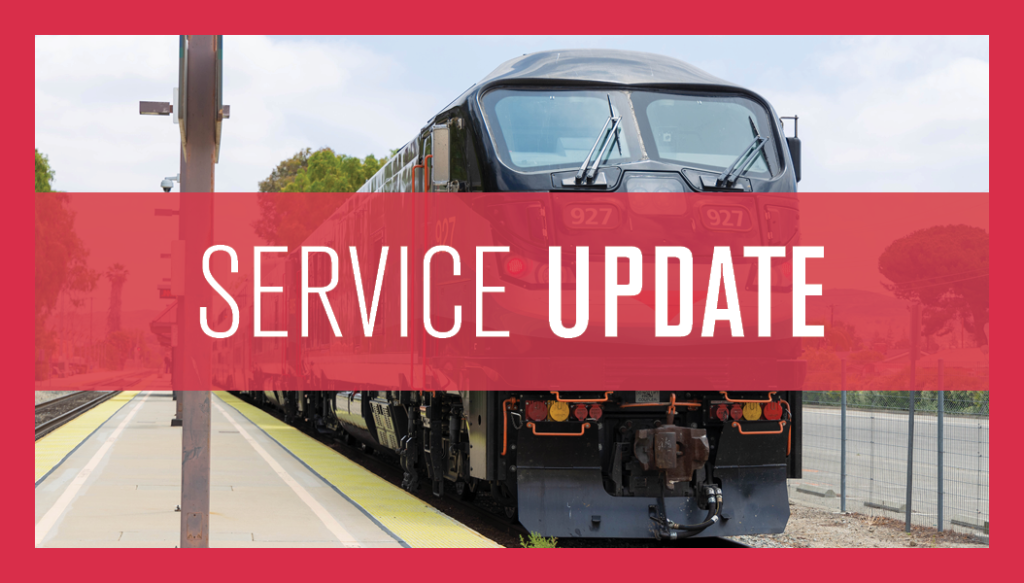
Transit Briefs: UTA, Amtrak, SFMTA/Muni, RTD, CTA, SMART, Metrolink
Written by Carolina Worrell, Senior Editor
UTA is developing a Five-Year Service Plan "to guide how transit services will improve."
The Utah Transit Authority (UTA) seeks input on its Five-Year Service Plan. Also, Iowa City Council approves the purchase of properties for potential Chicago to Iowa City route; San Francisco Muni to upgrade city streets with 1,500 new digital signs and boost tunnel wi-fi; the San Francisco Municipal Transportation Agency (SFMTA) reveals a sneak peek of the new Chinatown-Rose Pak Muni station; the Regional Transportation District (RTD) releases FY 2023 proposed budget; the Chicago Transit Authority (CTA) releases proposed 2023 operating budget; Sonoma-Marin Area Rail Transit (SMART) allots $14 million to build second Petaluma station; and Metrolink announces that weekend trains along the Orange County and Inland Empire-Orange County lines will resume service starting Oct. 29.
UTA
UTA is seeking input on the development of its Five-Year Service Plan to “guide how transit services will improve,” the agency announced via a Twitter post on Oct. 20.
The Five-Year Service Plan, which UTA describes as “a vision for the future to guide potential service planning changes over the next few years and get people where they need to go,” will focus on the following goals:
- Aligning UTA’s service network with new projections of available revenue.
- Achieving higher ridership long-term by aligning service with emerging travel patterns.
- Strengthening customer confidence in UTA by ensuring public transit is available when and where people need it.
- Supporting community engagement with the public by soliciting feedback that is need-based and specific.
To “ensure it is putting the right service in the right place,” UTA has initiated a robust community engagement plan that includes a webpage as a “repository for all plan updates and public engagement opportunities,” a media kit, ongoing social media efforts, the Board of Trustees’ Community Road Show, collaboration with other ongoing projects, an email sign-up for people to stay informed, a feedback and comment form, a Customer Service Department, a direct email ([email protected]) and a public survey.
“The Five-Year Service Plan is a dynamic guide for UTA’s near-term future. Our region is growing rapidly. Where and how we grow has impacts on the transportation network. This vision for the path ahead works to address these impacts through improvements to the transit system. This plan, like a route map, is a snapshot in time. It reflects UTA’s intended service based on the best information available. This plan is updated every two years and considers other regional and local transportation plans in its development,” UTA stated on the plan’s webpage.
Click here to take the public survey.
Amtrak
According to a report by The Daily Iowan, the Iowa City Council on Oct. 18 unanimously approved a request to purchase three residential properties, located south of the Iowa Interstate Railroad Yard and west of Oak Grove Park, that “will provide space for a potential Chicago to Iowa City Amtrak rail route.”
City of Iowa City staff, according to The Daily Iowan report, negotiated a deal to buy 800 S. Van Buren Street, 804 S. Van Buren Street, and 817 S. Webster Street for $475,000. The total appraisal value for the three properties is $507,000.
According to The Daily Iowan report, the Chicago to Quad Cities rail route is already under construction with Amtrak having identified an extension of this route to Iowa City as part of its 15-year vision, which was released in 2021.
“Even if the Amtrak route does not end up being built in this specific location, the acquisition of the properties can be helpful in other ways,” said City Manager Geoff Fruin in The Daily Iowan report.
“It also provides the city in the future, regardless of the Amtrak route, the ability to extend Oak Grove Park kind of in a linear fashion along the rail line should that be a priority in the future,” Fruin added.
SFMTA/Muni
According to a report by The San Francisco Standard, SFMTA’s Muni is set to begin the first state of its new Customer Information System project, which includes 1,500 new digital signs and boosted tunnel Wi-Fi services to “improve service reliability, transit times and arrival-time information.”
According to The San Francisco Standard report, the project also “promises better tunnel Wi-Fi and cellular signals—with more information on transfer connections to regional transit like Bay Area Rapid Transit (BART) and Golden Gate Transit.”
“October’s ‘soft launch’ will collect data on transit ridership and work out any bugs in the system,” according to SFMTA Board Member Manny Yekutiel.
In addition to signage upgrades, the agency plans to launch a new mobile app in February 2023 that will include a trip planner and mobile ticketing, according to The San Francisco Standard report.
According to The San Francisco Standard report, the agency “plans to display alternate route suggestions on signage at stops and in buses when services are impacted” by early 2024. The signage, the report adds, will “eventually feature arrival and departure times for connecting services like BART and Golden Gate Transit.” And by late 2024, Muni “hopes to display real-time service detours and service delays on signage.
Separately, the SFMTA, along with the San Francisco Arts Commission held on Oct. 20 a sneak peek event of the new Chinatown-Rose Pak Muni station to “celebrate the station and its artwork,” according to a San Francisco Standard report.

According to The San Francisco Standard report, a soft opening of the station is scheduled for Nov. 19 when trains will carry passengers for the first time on weekends only. Full routes are expected to open on January 22, 2023.
Chinatown community members and local leaders got a tour of the station’s new platform and art, which include two laser-cut metal installations representing traditional Chinese paper cuts by artist Yumei Hou, according to The San Francisco Standard report, which added, between now and Nov. 19, there are “100 small details” to complete in the stations and along the 1.7-mile route, including new lighting on the escalators and final training for Muni staff, said SFMTA Director Jeff Tumlin.

According to The San Francisco Standard report, Tumlin added that testing and final construction for the $1.953 billion project “has gone better than expected so far and will continue as passengers begin to board next month.”
According to The San Francisco Standard report, after the Nov. 19 soft opening, trains are expected to leave the station every 12 minutes, and more often after that depending on ridership levels.
According to The San Francisco Standard report, Tumlin said “the above-ground bus routes will remain unchanged as the station opens—but that the new route, connecting the Fourth and Brannan Station all the way up to the intersection at Stockton and Washington streets, will eventually relieve some of the crowding on the 45 Union and 30 Stockton bus routes.”
“Running north from Chinatown, the tunnel extends all the way to Washington Square Park in North Beach, but there’s currently no station there,” said Tumlin. According to The San Francisco Standard report, a possible extension west underneath Geary Boulevard is under consideration.
RTD
RTD General Manager and CEO Debra Johnson recently released a budget message introducing the agency’s FY23 budget. According to the letter, the budget “represents a financial plan for what’s next for the agency in the coming year,” including:
- Continuation of the 2021-2026 Strategic Plan implementation framework, aligning objective, measurable inputs with established strategic priorities and a laser like focus on employees’ efforts on metrics that matter to RTD’s overall success outcomes.
- Completion of the Systemwide Fare Study and Equity Analysis to evaluate potential changes to the fare structure and pass programs and develop recommendations to be considered for adoption by the Board.
- Implementation of the System Optimization Plan (SOP) with the January 2023 service change. Essentially, the SOP sets the stage for the agency’s optimization of service delivery through the short-term component of the Reimagine RTD effort, the agency’s Comprehensive Operations Analysis. The SOP is geared toward:
- Aligning service levels with workforce availability.
- Increasing the agency’s focus on providing a high-quality, regional backbone network.
- Sustaining the overall integrity of the transit network.
- Maintaining assets in a state-of-good-repair.
DOWNLOAD THE FULL BUDGET MESSAGE BELOW:
CTA
The Chicago Transit Authority (CTA) on Oct. 20 proposed a $1.8 billion operating budget that “keeps fares at current levels, maintains the agency’s commitment to improving service, and continues important investments to upgrade and modernize the system.”
According to the agency, the proposed spending “advances the CTA’s ‘Meeting the Moment: Transforming CTA’s Post-Pandemic Future’ Action Plan, a multifaceted investment plan that focuses on responding to customers’ concerns and strengthening the foundations of the rider experience–more consistent and reliable service, safe rides, clean facilities, modern amenities, dynamic customer engagement tools, and a strong CTA workforce.”
“Our proposed 2023 operating budget is both fiscally prudent and responsible, with a focus on further improving the essential transit services that Chicagoans rely on as the region continues to evolve from the pandemic,” said CTA President Dorval R. Carter, Jr. “In the year ahead, we are committed to maximizing every dollar of our budget to both modernize our system and continue work on the strategic initiatives outlined in support of the guiding pillars of ‘Meeting the Moment’ Action Plan, which addresses the most pressing challenges facing our customers and employees.”
According to the agency, CTA ridership grew steadily throughout 2022, reaching a pandemic-era high of more than 5.5 million weekly rides the first week of October. Ridership, CTA adds, is projected to increase further in 2023, approximately 9% over 2022 ridership.
To ensure that CTA meets that demand, the agency says it continues “an aggressive, comprehensive recruitment program to address the biggest issue impacting service: attracting and retaining workers, especially frontline employees like bus and rail operators.”
“Like businesses across the country, especially those in the transportation industry, the CTA continues to face workforce challenges related to the pandemic. The impacts of the Great Resignation, retirements, competition for workers and other factors means that the CTA does not have enough Bus and Rail operators needed to provide all scheduled service,” the agency adds.
According to the agency, in 2022, the CTA made “great progress toward addressing this issue,” including hosting eight job fairs that attracted hundreds of potential employees and hiring dozens of new workers into a variety of positions. The agency says it has also worked closely with its operator’s union to help address a shortage of nearly 1,000 workers.
Additionally, the CTA says it continues to improve the digital tools used to provide customer information, including a redesigned, mobile-friendly Bus Tracker website; and continues to work on the data and algorithms that power the trackers, to make sure they are as accurate as possible.
“Since the start of the pandemic, federal funding has been crucial to allow transit agencies across the country, including the CTA, to maintain their operations,” the agency says. Federal funding from the American Rescue Plan will help the CTA close a projected $390 million budget gap in 2023—and allow the agency to continue providing full service. Despite the financial challenges, the CTA says it “continues to look for ways to operate more efficiently and effectively, and to best serve the region.”
Additionally, the CTA says it remains focused on modernization and improvement of its physical infrastructure—tracks, rail stations, buses and trains, facilities and technologies. The CTA’s 2023-2027 Capital Improvement Program—which is separate from the agency’s operating budget—calls for $3.4 billion in projects over the next five years. Among investments is the Red Line Extension, which will “extend the CTA’s busiest rail line to the southern City limits and provide greatly improved transit access and connectivity to the Far South Side of Chicago.”
Other capital projects to continue or begin in 2023 include:
- All Stations Accessibility Program (ASAP), to make CTA’s rail system 100% vertically accessible.
- Expansion of electric bus fleet, part of CTA’s commitment to complete the electrification of the entire bus fleet by the year 2040.
- Refresh & Renew, an expanded and accelerated rail station improvement program.
- Better Streets for Buses, a comprehensive, citywide plan for bus-priority streets.
“Investment in transit infrastructure has always been an investment in a strong future for the city,” Carter said. “Further, continued investment in transit is directly tied to our city’s economic recovery, a way to promote jobs and opportunities at a time when the city needs them most.”
CTA will host a virtual public hearing on the proposed 2023 budget on Nov. 10 at 6 p.m.
SMART
According to a Marin Independent Journal report, the SMART board voted unanimously on Oct. 19 to budget $14 million in funding for the Petaluma North Station—the second train station in Petaluma—located near the Corona Road and North McDowell Boulevard intersection. Construction, the report adds, is scheduled to begin in summer 2023 with passenger service set to begin in the fall of 2024.
According to the Marin Independent Journal report, SMART “first envisioned a second Petaluma station nearly two decades ago as part of its vision for a 70-mile rail corridor connecting Larkspur to Cloverdale.” The station, the report adds, would become the passenger rail system’s 13th station and would be located nearly three miles northwest of the downtown Petaluma station.
“I look forward to this really important new station coming online with the second largest city in our county, at least, and a lot of ridership potential on the east side of town, making it much easier for connections up and down the corridor,” Sonoma County Supervisor and Chair of the SMART Board David Rabbitt said.
Of the $14 million budgeted for the Petaluma station, $10 million is sourced from a state grant awarded earlier this year by the California State Transportation Agency (CalSTA), according to the Marin Independent Journal report, which adds that “the City of Petaluma and the Sonoma County Transportation Authority are each set to contribute $2 million toward the project.”
According to the Marin Independent Journal, “both the Petaluma City Council and the transportation authority’s governing board are expected to vote on the funding before the end of the year.”
“SMART plans to approve a contract for the project’s design in January,” the report adds.
Metrolink
Beginning Saturday, Oct. 29, Metrolink will resume weekend train service along the Orange County and Inland Empire-Orange County lines to and from San Juan Capistrano, San Clemente and San Clemente Pier stations, the agency announced on Oct. 20.

“While we are pleased to be able to restore service on weekends as far south as the San Clemente Pier, service Monday through Friday remains suspended at all stations south of the Laguna Nigel/Mission Viejo Station,” the agency said. “This is due to the higher volume of train traffic along this single-track route on weekdays, compared to weekends, making it challenging to provide service without significant delays.”
According to the agency, the risk associated with the hillside slope movement prompted Metrolink and Amtrak Pacific Surfliner to suspend passenger rail service on Sept. 30. Metrolink adds that emergency repairs will be underway soon, and according to officials at the Orange County Transportation Authority (OCTA), which owns the railroad right of way between Fullerton and the San Diego County border, full restoration of passenger rail service could happen between mid-December and the end of January.
Details on OCTA’s Emergency Track Stabilization Project are available here.


